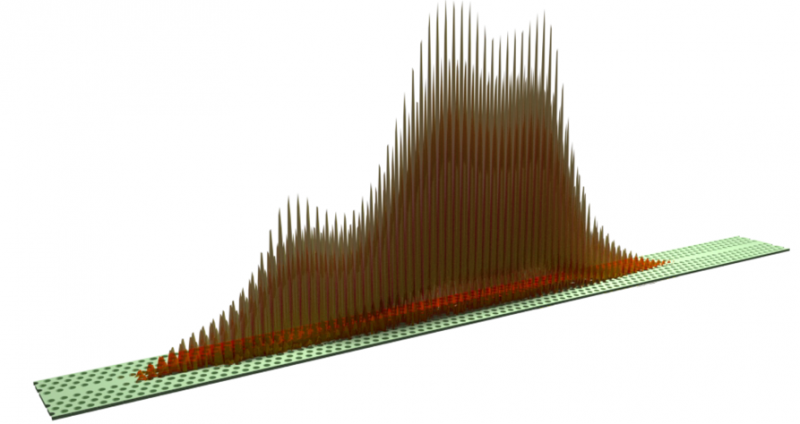Warm regards for confined light in nanophotonic circuits

Researchers at the Debye Institute for Nanomaterials Science, together with colleagues from the University of Twente and Thales Research and Technology (France), have found a non-invasive technique to measure the intensity profile of light that is confined by disorder in nano-sized photonic devices. This method may eventually lead to faster optical communications, and faster processing in quantum information technologies. The researchers published their results in the leading optical journal Optics Express on 12 September 2016.
Every nanostructure suffers from unavoidable disorder: a disturbance of its function caused by unavoidable irregularities in nanofabrication. Contrary to what the name might suggest, disorder in a nanostructure is not necessarily a disadvantage. Disorder can cause light to be tightly confined, and if its intensity profile is measured accurately, the confined light might be used to make components for quantum information technology and high speed optical communication.
Optical buffers
One bottleneck in high-speed optical communication is that light signals have to be converted to electronic signals at nodes to switch data to different destinations. This conversion can be avoided with the help of optical buffers that store light signals temporarily. Right now, these buffers are usually implemented with optical fibres that are several centimeters long, which can store light for a few nanoseconds. However, with smart use of disorder-induced confinement, nanophotonic circuits 100 times smaller – only one-tenth of a millimeter long – can store light for a similar time.
Non-invasive method
Photonic crystal waveguides are nanophotonic structures in which light confinement by disorder widely occurs. In order to make use of the confined light, the first essential step is to identify where the light is confined and what its spatial profile is. Compared to the previous measuring methods, which perturb the structure, Jin Lian (Debye Institute) and his colleagues have developed a new non-invasive method to precisely identify the spatial and spectral information, using local heating. The researchers used a blue laser to slightly heat a small spot on the crystal. The response of the optical system reveals how much light is confined there.
More information: Measurement of the profiles of disorder-induced localized resonances in photonic crystal waveguides by local tuning, arxiv.org/abs/1606.01197
Journal information: Optics Express
Provided by Utrecht University Faculty of Science




















